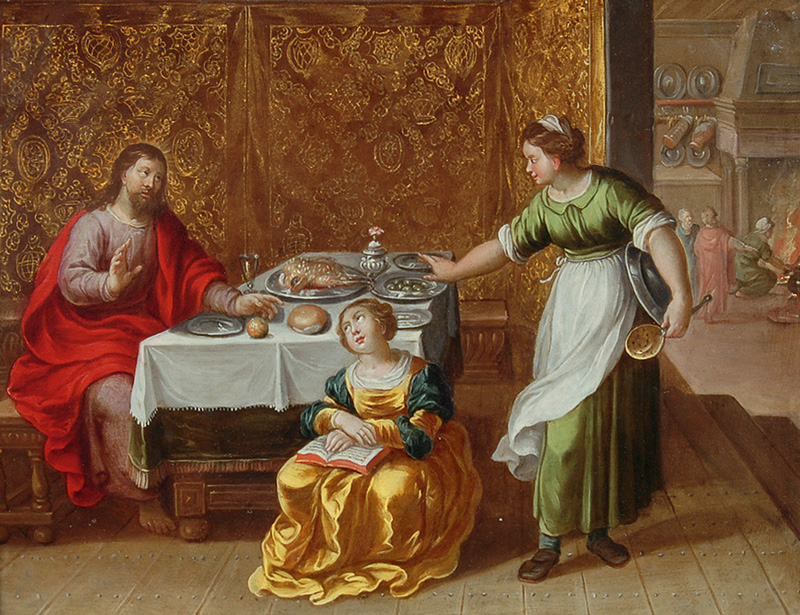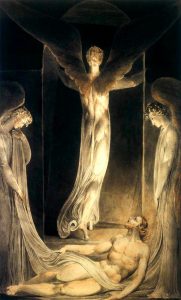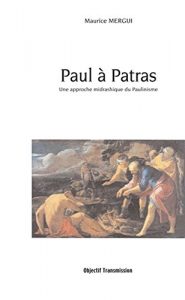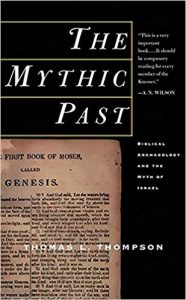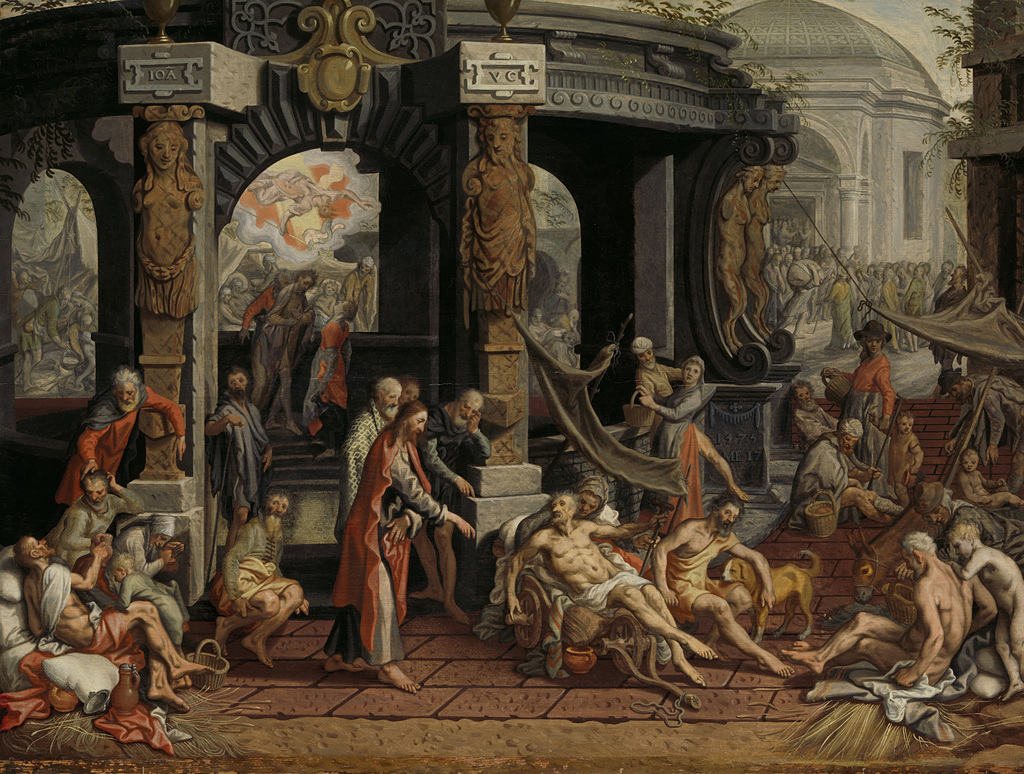
Continuing with Nanine Charbonnel's Jésus-Christ, Sublime Figure de Papier . . .
. . .
We are not talking about a violent revolution but a revolution in the way the Jewish Scriptures were read, the one that launched Christianity itself, or at least Christianity as we know it to be grounded in belief in the four gospels.
Nanie Charbonnel (NC) begins the nitty-gritty of her discussion with this question of hermeneutics. The Jewish Scriptures came to be read as foreshadowings of what was to be fulfilled as reality in Christianity. (This is to be distinguished from the sort of allegorical reading Philo practised. For Christians it was important to begin with the understanding that the OT spoke of historical reality that was rather like a shadow-acting out of what was to come.) There were three types of fulfilment all bound up together:
1. The promises, the prophets, the psalms, in the OT were read as having been fulfilled in the last days which were “here and now” — the “old” Israel was replaced by a “new” and “true” Israel;
2. History itself was at an end, being completed in the “here and now” of the days of the advent of God’s works through the introduction of “Christianity”;
3. The true moral meaning of the Scriptures was found in Christian interpretation: the “old” Jewish reading of the Scriptures was barren, literal, legalistic, dominated by a God of wrath; the “new” Christian reading was life, spiritual, faith, introducing a God of love.
And all of these fulfillments culminated in Jesus.
Our “Christian tradition” has misunderstood the original meaning of this fulfilment with respect to ethics. Often we have heard and read about how Christianity introduced a “spiritual” and higher ethic than was found in the OT, so different that the advent of Christianity can be seen as the marker of a new evolutionary phase for humanity. Notice, for example, the way the word “τέλειος” has been translated in Jesus’ instruction to the rich man who wanted eternal life.
Jesus answered, “If you want to be perfect, go, sell your possessions and give to the poor, and you will have treasure in heaven. Then come, follow me.”
But the word more strictly means “fulfilled”, “completed”, “accomplished”. The idea is not that Jesus was teaching a hitherto unknown level of perfection, but that he was teaching fulfilment of an ideal, a hope.
The Prophets longed for a time when God’s rule would bring about mercy, justice, healing. The Beatitudes we read from the mouth of Jesus were not a new teaching per se but rather a fulfilment of what was once expressed as a longed-for hope. Recall Isaiah 61:
Matthew 5:
3 “Blessed are the poor in spirit,
For theirs is the kingdom of heaven.
4 Blessed are those who mourn,
For they shall be comforted.
5 Blessed are the meek,
For they shall inherit the earth.
6 Blessed are those who hunger and thirst for righteousness,
For they shall be filled.
7 Blessed are the merciful,
For they shall obtain mercy.
8 Blessed are the pure in heart,
For they shall see God.
9 Blessed are the peacemakers,
For they shall be called sons of God.
10 Blessed are those who are persecuted for righteousness’ sake,
For theirs is the kingdom of heaven.
“The Spirit of the Lord God is upon Me,
Because the Lord has anointed Me
To preach good tidings to the poor;
He has sent Me to heal the brokenhearted,
To proclaim liberty to the captives,
And the opening of the prison to those who are bound;
2 To proclaim the acceptable year of the Lord,
And the day of vengeance of our God;
To comfort all who mourn,
3 To console those who mourn in Zion,
To give them beauty for ashes,
The oil of joy for mourning,
The garment of praise for the spirit of heaviness;
That they may be called trees of righteousness . . .
The “superior ethic” is in fact a proclamation of eschatology. The prophecy, the hope of the old, has been fulfilled.
We know of different ways Jews have sought to find meanings in the Scriptures by exploring and “discovering” various nuances of meaning, but when we come to early Christian interpretations of the Scriptures we have changed tracks and tended to assume that the first Christian exegetes were beginning with historical events and looking for explanations of those events in the Scriptures. The Jesuit priest Xavier Leon-Dufour, sums up this viewpoint:
Some points are accepted by all. Long before the early Christians, Scripture was referred to as the manifestation of the word of God; but we did it differently. [Other than the targumim,] sometimes we wanted to comment on the text of the Scripture to make it more alive and more assimilable: the inquiries of the rabbis ended in the midrashim. Still earlier it was declared that such a prophecy, for example that of Habakkuk, announced in its own way the events experienced by contemporaries: we know the Qumran pesher. In all these cases we therefore sought to actualize the divine Word. The first Christians did not do otherwise: for them too, the key to interpreting the events they had just experienced was found in the Holy Scriptures. . . .
Something, however, radically differentiates their practice from Jewish exegesis. What is first for Christians is not the scriptural text, but the event. If they use Scripture, it is not to comment on it according to their time; it is to better understand the events experienced by them.
(From Preface to C.H. Dodd’s French edition of According to the Scriptures, NC: 155)
The Christian approach has been to begin with the historical reality of events addressed in their gospels and to then turn to read the Jewish Scriptures as “proofs” of the divine will and acts behind those events. The irony, NC asserts, is that those events were originally created from texts that had been written (in Hebrew) as Jewish midrash or pesher.
The original church or Christians did not see themselves as some sort of substitute for Judaism; they saw themselves as a fulfilment of Israel according to God’s plan. That is how the assembly in Jerusalem at Pentecost in the opening of Acts is presented.
The New Testament is nothing more than an expression of the belief that the promises of the OT are fulfilled. The New Covenant is essentially the book of Deuteronomy, for instance, with the only difference being that what was promised in Deuteronomy is fulfilled in the NT. Jesus himself is the New Israel, the new people of God, fulfilling the law perfectly. Even his conquering of death is part of this fulfilment since this, too, was part of the hope of Israel.
The “good news” that Jesus preaches is that he himself is the “good news”. He is the kingdom brought near to all. Many readers today, including scholars, have drawn the same interpretation of Jesus’ message, but that’s where they have stopped. They have failed to go on to the next step that should follow from that point: that Jesus himself is a figure created to express that idea. The Jesus figure is created from the promises of the OT as a fulfilment of the OT. He is not a real figure to whom followers sought to attach descriptive scriptures.
What we need to examine are the hermeneutic practices in the Jewish Bible and how it came about that those techniques became confused with “prophecies” that found fulfilment in historical reality.
Charbonnel, Nanine. 2017. Jésus-Christ, Sublime Figure de Papier. Paris: Berg International.
Like this:
Like Loading...
Affirming the consequent is a formal fallacy occurring when one or more potential premises are omitted from an argument. For example, “if my rain dance worked then it should be raining; it is raining; therefore, my rain dance worked.” Here other possible causes of the rainfall are left out and the argument fails. Affirming the consequent has the general form:


